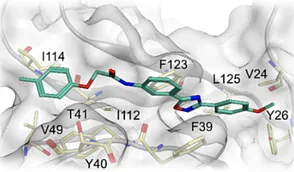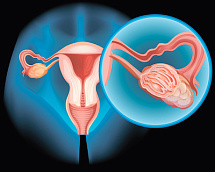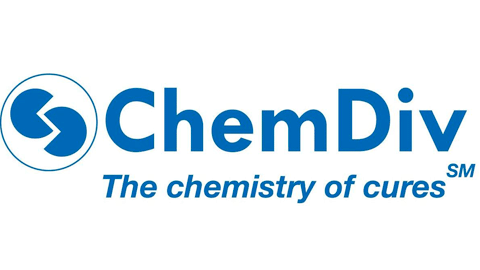Innovative treatments for sickle cell disease

In people with sickle cell disease, the structure of hemoglobin, a protein of red blood cells that carries oxygen, is disrupted. Due to a hereditary mutation in such people, hemoglobin does not assemble correctly and as a result sticks together into long, rigid chains – hemoglobin S (HbS). Because of the “rods” of HbS, the erythrocytes of patients acquire a crescent shape and carry little oxygen [1]. In addition, hemoglobin S is very fragile and therefore erythrocytes with HbS are rapidly destroyed. Due to the overload of sickle-shaped erythrocytes, the vessels of various organs become clogged with blood clots, and this feels like terrible pain. As a result, a child born with sickle cell disease cannot begin to learn to walk on time. Up to 5 years of age, such a child, if infected with any infection, is at risk of sepsis, because his spleen is clogged with red blood cells and cannot function normally. Throughout their lives, people with sickle cell disease suffer from blockages of blood vessels in various organs: for example, they can die of a stroke or go blind.
Sickle cell disease is very common in tropical regions where mosquitoes that carry malaria pathogens live. The fact is that carriers of the disease, due to the altered work of red blood cells, are resistant to malaria, but they can also give birth to a child with sickle cell anemia. For a very long time, hydroxyurea was the only medicine that did little to help sickle cell patients. This drug increases the amount of fetal hemoglobin (HbF), the structure of which is not disturbed in patients, as a result, red blood cells acquire a rounded shape and can carry more oxygen. To maintain health, patients can now take other drugs that improve vascular health [2]. But some people cannot take hydroxyurea due to contraindications, and such drugs do not affect the cause of the disease, that is, they are not drugs.
Transplantation of hematopoietic cells – blood stem cells – from a healthy donor has long been the only way to really cure sickle cell disease. But for less than one-fifth of patients, a suitable donor can be found. True medicines for sickle cell disease have been developed quite recently.
In 2008, scientists from Boston showed that if you act on a protein that suppresses HbF synthesis, you can resume the production of fetal hemoglobin and at the same time reduce the amount of HbS [3]. And in 2017, their colleagues reported on the successful repair of the hemoglobin gene in hematopoietic cells using lentiviruses [4]. At the moment, several scientific teams around the world are developing gene therapy for sickle cell disease, facing problems in the production of lentiviruses, which must be produced in large quantities in order to correct a sufficient number of hematopoietic cells. Therefore, in clinical trials of phase 1 of one of these drugs, scientists achieved maintenance of hemoglobin levels only at the lower limit of the norm, but could not cure patients completely [5].
CRISPR-Cas9 gene-editing technology can be a more accurate therapy tool than lentiviruses. Thus, with the help of CRISPR-Cas9, it became possible to raise the hemoglobin level in patients to normal and relieve them of pain [6]. In addition, this genetic editing technology, due to its precision, reduces the possible risk of induction of malignant neoplasms. After all, it is assumed that sickle hematopoietic cells accumulate dangerous mutations faster than normal [7]. The good news is that scientists only need to repair one of the two variants of the hemoglobin gene for the hematopoietic cells to synthesize enough normal hemoglobin. And, judging by the preliminary statements of the researchers, they have already managed to “fix” 80-90% of the hematopoietic cells.
Alexander Khazanov
Sickle cell disease is very common in tropical regions where mosquitoes that carry malaria pathogens live. The fact is that carriers of the disease, due to the altered work of red blood cells, are resistant to malaria, but they can also give birth to a child with sickle cell anemia. For a very long time, hydroxyurea was the only medicine that did little to help sickle cell patients. This drug increases the amount of fetal hemoglobin (HbF), the structure of which is not disturbed in patients, as a result, red blood cells acquire a rounded shape and can carry more oxygen. To maintain health, patients can now take other drugs that improve vascular health [2]. But some people cannot take hydroxyurea due to contraindications, and such drugs do not affect the cause of the disease, that is, they are not drugs.
Transplantation of hematopoietic cells – blood stem cells – from a healthy donor has long been the only way to really cure sickle cell disease. But for less than one-fifth of patients, a suitable donor can be found. True medicines for sickle cell disease have been developed quite recently.
In 2008, scientists from Boston showed that if you act on a protein that suppresses HbF synthesis, you can resume the production of fetal hemoglobin and at the same time reduce the amount of HbS [3]. And in 2017, their colleagues reported on the successful repair of the hemoglobin gene in hematopoietic cells using lentiviruses [4]. At the moment, several scientific teams around the world are developing gene therapy for sickle cell disease, facing problems in the production of lentiviruses, which must be produced in large quantities in order to correct a sufficient number of hematopoietic cells. Therefore, in clinical trials of phase 1 of one of these drugs, scientists achieved maintenance of hemoglobin levels only at the lower limit of the norm, but could not cure patients completely [5].
CRISPR-Cas9 gene-editing technology can be a more accurate therapy tool than lentiviruses. Thus, with the help of CRISPR-Cas9, it became possible to raise the hemoglobin level in patients to normal and relieve them of pain [6]. In addition, this genetic editing technology, due to its precision, reduces the possible risk of induction of malignant neoplasms. After all, it is assumed that sickle hematopoietic cells accumulate dangerous mutations faster than normal [7]. The good news is that scientists only need to repair one of the two variants of the hemoglobin gene for the hematopoietic cells to synthesize enough normal hemoglobin. And, judging by the preliminary statements of the researchers, they have already managed to “fix” 80-90% of the hematopoietic cells.
Alexander Khazanov


